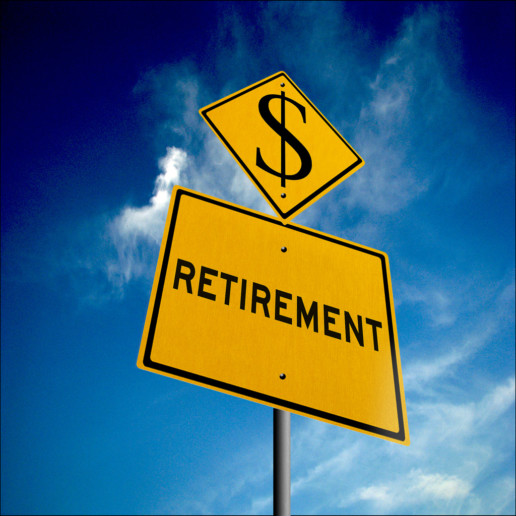5 Benefits Communication Mistakes That Kill Employee Satisfaction
Are you using the proper communication channels to inform your employees about their benefits? Take a look at this great article from HR Morning about how to manage to communicate with your employees to keep them satisfied at work by Jared Bilski.
Good benefits communication is more important than the actual benefits you offer – at least when it comes to employee satisfaction.
Proof: When a company with a rich benefits program (i.e., better than industry standard) communicated poorly, just 22% of workers were satisfied with their benefits.
On the other hand, when an employer with a less rich benefits program communicated effectively, 76% of employees were satisfied with the benefits.
These findings come from a Towers Watson WorkUSA study.
At the at the 2017 Mid-Sized Retirement & Healthcare Plan Management Conference in Phoenix, AZ., Julie Adamik, the former head of Employee Benefits Training and Solutions at PETCO, highlighted the five most common benefits communication mistakes that put firms in the former category.
Satisfaction killers
1. The information is boring. Many employees assume that if the info is about benefits, it’s probably boring. As a result, they tend to tune out and miss critical material.
2. The learning styles and preferences of different generations aren’t taken into account. With multiple generations working side-by-side, a one-size-fits-all approach is doomed to fail.
3. The budget is too low. If your company has a $15 million benefits package, you shouldn’t accept upper management’s argument that a $2,500 communication budget should cover it. HR and benefits pros need to take a stand in this area.
4. The language is “too professional.” Assuming that official-sounding language is better than “plain speak” is a common but costly communication mistake.
5. There’s too much information being covered. Cramming everything into a single open enrollment meeting is guaranteed to overwhelm employees.
Cost, wellness, personal issues and care
Employers also need to be wary of relying too heavily on tech when it comes to benefits communication. Even though there are plenty of technological innovations in the world of benefits services and communications, but HR pros should never forget the importance of old-fashioned human interaction.
That’s one of the main takeaways from a recent Health Advocate study that was part of the whitepaper titled “Striking a Healthy Balance: What Employees Really Want Out of Workplace Benefits Communication.”
The study broke down employees’ preferred methods of benefits communications in a number of areas. (Note: Employees could select more than one answer.)
When asked how they preferred to receive health cost & administrative info, the report found:
- 73% of employees said directly with a person by phone
- 69% said via a website/online portal, and
- 56% preferred an in-person conversation.
Regarding their wellness benefits:
- 71% of employees preferred to receive the info through a website/online portal
- 62% said directly with a person by phone, and
- 56% preferred an in-person conversation.
In terms of personal/emotional wellness issues:
- 71% of employees preferred to receive the info directly with a person by phone
- 65% preferred an in-person conversation, and
- 60% would most like to receive the info via a website/online portal.
Finally, when it came to managing chronic conditions:
- 66% of employees preferred to receive the info directly with a person by phone
- 63% would most like to receive the info via a website/online portal, and
- 61% preferred an in-person conversation.
See the original article Here.
Source:
Bilski J. (2017 April 4). 5 benefits communication mistakes that kill employee satisfaction [Web blog post]. Retrieved from address https://www.hrmorning.com/5-benefits-communication-mistakes-that-kill-employee-satisfaction/
Half of Mature Workers Delaying or Giving Up on Retirement
Did you know that now more than ever Americans are giving up on their dreams of retirement? Find out about the somber facts facing the older generation of workers in the great article from Benefits Pro by Marlene Y. Satter.
It’s a grim picture for older workers: half either plan to postpone retirement till at least age 70, or else to forego retirement altogether.
That’s the depressing conclusion of a recent CareerBuilder survey, which finds that 30 percent of U.S. workers aged 60 or older don’t plan to retire until at least age 70—and possibly not then, either.
Another 20 percent don’t believe they will ever be able to retire.
Why? Well, money—or, rather, the lack of it—is the main reason for all these delays and postponements.
But that doesn’t mean that workers actually have a set financial goal in mind; they just have this sinking feeling that there’s not enough set aside to support them.
Thirty-four percent of survey respondents aged 60 and older say they aren’t sure how much they’ll need to save in order to retire.
And a stunning 24 percent think they’ll be able to get through retirement (and the potential for high medical expenses) on less than $500,000.
Others are estimating higher—some a lot higher—but that probably makes the goal of retirement seem even farther out of reach, with 25 percent believing that the magic number lies somewhere between $500,000–$1,000,000, 13 percent shooting for a figure between $1–2 million, 3 percent looking at $2 million to less than $3 million and (the) 1 percent aiming at $3 million or more.
And if that’s not bad enough, 26 percent of workers 55 and older say they don’t even participate in a 401(k), IRA or other retirement plan.
With 74 percent of respondents 55 and older saying they aren’t making their desired salary, that could play a pretty big part in lack of participation—but that doesn’t mean they’re standing still. Eight percent took on a second job in 2016, and 12 percent plan to change jobs this year.
Predictably, the situation is worse for women. While 54.8 percent of male respondents aged 60+ say they’re postponing retirement, 58.7 percent of women say so.
Asked at which age they think they can retire, the largest groups of both men and women say 65–69, but while 44.9 percent of men say so, just 39.6 percent of women say so.
In addition, 24.4 percent of women peg the 70–74 age range, compared with 21.1 percent of men, and 23.2 percent of women agree with the gloomy statement, “I don’t think I’ll be able to retire”—compared with 18 percent of men.
And no wonder, since while 21.7 percent of men say they’re “not sure” how much they’ll need to retire, 49.3 percent of women are in that category.
Women also don’t participate in retirement plans at the rate that men do, either; 28.3 percent of male respondents say they don’t participate in a 401(k), IRA or other retirement plan, but 35.4 percent of female respondents say they aren’t participating.
For workers in the Midwest, a shocking percentage say they’re delaying retirement: 61.6 percent overall, both men and women, of 60+ workers saying they’re doing so.
Those in the fields of transportation, retail, sales, leisure and hospitality make up the largest percentages of those putting off retirement, at 70.4 percent, 62.5 percent, 62.8 percent and 61.3 percent, respectively. And 46.7 percent overall agree with the statement, “I don’t think I’ll be able to retire.”
Incidentally, 53.2 percent of those in financial services—the largest professional industry group to say so—are not postponing retirement.
They’re followed closely by those in health care, at 50.9 percent—the only other field in which more than half of its workers are planning on retiring on schedule.
And when it comes to participating in retirement plans, some industries see some really outsized participation rates that other industries could only dream of. Among those who work in financial services, for instance, 96.5 percent of respondents say they participate in a 401(k), IRA or comparable retirement plan.
That’s followed by information technology (88.2 percent), energy (87.5 percent), large health care institutions (85.8 percent—smaller health care institutions participate at a rate of 51 percent, while overall in the industry the rate comes to 75.5 percent), government employees (83.6 percent) and manufacturing (80.2 percent).
After that it drops off pretty sharply, and the industry with the lowest participation rate is the leisure and hospitality industry, at just 43.4 percent.
See the original article Here.
Source:
Satter M. (2017 March 31). Half of mature workers delaying or giving up on retirement [Web blog post]. Retrieved from address https://www.benefitspro.com/2017/03/31/half-of-mature-workers-delaying-or-giving-up-on-re?ref=mostpopular&page_all=1
Expert: The staggering new retirement savings number millennials have to hit
Have your millennial workers started saving for retirement? If not take a look at this great article from HR Morning about the amount of money millennials need to save for retirement by Christian Schappel.
Want to jolt your younger workers into contributing more to your company-sponsored retirement plans? Just show them this figure.
After looking at several studies, estimates and financial experts’ opinions, Robert Powell, USA Today’s retirement planning expert and editor of Retirement Weekly, is predicting that millennials will need upwards of $2.5 million saved to comfortably retire.
That estimate is for the youngest millennials — those born in the late 1990s.
The news isn’t quite as bleak for those born in the 1980s. Their retirement savings goal, according to Powell: $1.8M.
Why so much?
Here are the numbers behind the estimates.
Powell’s assuming millennials will need to live on between $30K and $40K annually in retirement (in today’s dollars).
Plus, a modest rate of inflation (2%) will make $1M of today’s dollars worth about $530K in 32 years, and roughly just $386K in 48 years.
You can see Powell’s breakdown in more detail here.
The bottom line is this: For today’s millennials to hit that $2.5M number in 48 years, Powell said they’d need to save about $1,000 per month — and that’s assuming there’s 5% growth on their investments annually. That’s a staggering amount that, most likely, your employees aren’t coming close to hitting.
Still, every little bit helps. And if these figures can encourage employees to increase their savings even a little, they’ve done their job.
See the original article Here.
Source:
Schappel C. (2017 February 23). Expert: the staggering new retirement savings number millennials have to hit [Web blog post]. Retrieved from address https://www.hrmorning.com/expert-the-staggering-new-retirement-savings-number-millennials-have-to-hit/
Why sitting is the new office health epidemic
Is your health starting to suffer from sitting down at work all day? Take a look at this interesting piece from Employee Benefits Advisor about the effects that sitting down all day can have on your health by Betsy Banker.
In the continuing conversation about employee health, there’s a workplace component that isn’t getting the attention it should— and it’s something that workers do the majority of every workday.
Sitting has become the most common posture in today’s workplace, and computer workers spend more than 12 hours doing it each day. Science tells us that the consequences are great, but our shared cultural bias toward sitting has stifled change. Many employees and company leaders struggle to balance well-being and doing their work. And it’s time for employers to do something about it.
Rather than accept the consequences that come as a result of the sedentary jobs employees (hopefully) love, it’s time to elevate the office experience to one that embraces movement as a natural part of the culture. Such a program will address multiple priorities at once: satisfaction, engagement, health and productivity. Organizations of every size and structure should embrace a “Movement Mindset” and say goodbye to stale, sedentary work environments.
There are many benefits to incorporating the Movement Mindset:
· Encourages face time. As millennials and Generation Z take over the office, attracting and retaining top talent is a key initiative for companies. Especially in light of the Society for Human Resource Management findings that 45% of employees are likely to look for jobs outside their current organization within the next year. Research has shown that Gen Z and millennials crave in-person collaboration, and users of movement-friendly workstations (particularly those ages 20 to 30) report being more likely to engage in face time with coworkers than those using traditional sit-only workstations.
Standing meetings tend to stay on task and move more quickly. Their informal nature means they can also be impromptu. Face time has the added benefit of building culture and social relationships, increasing brainstorming and collaboration, and creating a more inclusive work environment.
· Keeps you focused. For those who sit behind a desk day in and day out -- which, according to our research, about 68% of workers do -- it can be a feat to remain focused and productive. More than half of those employees admit to taking two to five breaks a day, and another 25% take more than six breaks per day to relieve the discomfort and restlessness caused by prolonged sitting. It may not seem like much, but considering that studies have shown it can take a worker up to 20 minutes to re-focus once interrupted, this could significantly impact the productivity of today’s office workers.
It’s time to connect the dots between extended sitting, the ability to remain focused and the corresponding effect these things have on the overall health of an organization. Standing up increases blood flow and heart rate, burns more calories and improves insulin effectiveness. Individuals who use sit-stand workstations report improved mood states and reduced stress. Offering options for employees to alternate between sitting and standing during the day could be the key to effectively addressing restlessness while improving focus and productivity.
· Addresses sitting disease. The average worker spends more than 12 hours in a given day sitting down. In the last few years, the health implications surrounding a sedentary lifestyle are starting to come to light (like the increased risk of heart disease, diabetes and early mortality). It’s a vicious cycle where work is negatively affecting health, and poor health is negatively impacting engagement and productivity. Not to mention, the benefits span long and short term, with impacts on employee absenteeism and presenteeism, as well as health and healthcare costs. Offering sit-stand options to incorporate movement back into a worker's daily regimen is a great way to offset those implications, while showing employees that their health, comfort and satisfaction are important to the company. Plus, a recent study found that if a person stood for just an extra three hours a day, they could burn up to 30,000 calories over the course of a year — that’s the same as running 10 marathons or burning off eight pounds of fat.
Our sit-biased lifestyles are beginning to be seen as an epidemic; it’s the new smoking, and office workers who spend their days behind a desk are at great risk. Providing a sit-stand workstation is more than just a wellness initiative. It offers significant opportunities for companies to retain and attract talent, improve a company's bottom line, and offer employees a workspace that gives them the ability to move in a way that can actually improve productivity.
Embracing the Movement Mindset can turn the tables on the trends, going beyond satisfaction to create a cycle where work can positively impact health and good health can improve engagement and productivity.
See the original article Here.
Source:
Banker B. (2017 March 27). Why sitting is the new office health epidemic [Web blog post]. Retrieved from address https://www.employeebenefitadviser.com/opinion/why-sitting-is-the-new-office-health-epidemic?feed=00000152-1387-d1cc-a5fa-7fffaf8f0000
Financial stress hurts emotional, physical well-being of workers
Did you know that your emotional and physical well-being can take a hit when you are under financial stress? Here is an interesting article from Employee Benefits Advisors about the correlation between financial stress and mental and physical health by Amanda Eisenberg.
Americans aren’t able to save for their financial goals, and that stress is affecting their emotional and physical well-being.
A new study by Guardian Life Insurance found that financial outlook is the most significant driver of working Americans’ overall well-being, constituting 40% of the insurance company’s Workforce Well-Being Index, and money is cited as the No. 1 source of stress for a majority of workers.
“Even among people working full-time with benefits, many still do not have access to adequate insurance coverage or retirement plans,” says Dave Mahder, vice president and chief marketing officer of Guardian’s Group and Worksite Markets business. “And few take advantage of the health and wellness programs available through their employers, which often contain a much broader menu of resources than workers realize.”
Millennials are one of the subsets of employees who do participate in benefits that can help alleviate financial stress, the survey found.
“Millennials want marketing to them,” says Gene Lanzoni, assistant vice president of thought leadership for Guardian Life. “It’s not enough these days to say, “This is someone like you,” to do with your benefit selection. That’s what the challenge is for millennials. It’s not enough of an engaging process for them.”
Half of millennials surveyed in Guardian Life’s “Fourth Annual Guardian Workplace Benefits Study” said they don’t have disability insurance, while a third have yet to sign up for a retirement plan.
They are not the only group of employees struggling to purchase voluntary benefits like disability and life insurance; single working parents are also feeling the heat.
One in three single working parents does not have a retirement plan, compared to 20% of the 1,439 workers surveyed. Similarly, one in four workers doesn’t have life insurance, and one in three workers doesn’t have disability insurance, according to the survey.
“Many of those working parents are struggling to balance work and personal life, and they may not be able to afford some of the protection products,” says Lanzoni. “Some of that discretionary income might not go toward paying a voluntary disability plan.”
To offset expenses, Americans are increasingly turning to debt, whether through loans or credit cards, to temporarily relieve their financial burdens.
Four in 10 Americans have car loans, 32% of workers are carrying a mortgage, 17% have student loans and 12% have home improvement debt, according to the study. Overall, 75% of Americans are carrying debt.
Non-mortgage debt — particularly auto and education loans — contributes to lower financial wellness; those carrying the most total debt, including mortgages and rent, report considerably lower overall well-being, according to Guardian Life’s report.
Employers can also help alleviate the burden by providing education to employees, among other services, says Lanzoni.
The survey found that employer-sponsored voluntary insurance products and college tuition or loan repayment programs help with financial wellness, as well as employee assistance programs that can identify financial, emotional and physical issues that lead to stress.
See the original article Here.
Source:
Eisenberg A. (2017 March 13). Financial stress hurts emotional, physical well-being of workers [Web blog post]. Retrieved from address https://www.employeebenefitadviser.com/news/financial-stress-hurts-emotional-physical-well-being-of-workers?feed=00000152-1387-d1cc-a5fa-7fffaf8f0000
Two-thirds of Americans aren’t putting money in their 401(k)
Did you know only about a third of Americans are putting money away into their retirement accounts? Check out this interesting article from Employee Benefits Advisors about some of the statics of Americans 401(k) savings by Ben Steverman.
(Bloomberg) – Americans aren’t saving enough for retirement.
True, this has been a refrain for longer than many can remember. But now some disturbing numbers show exactly how bad it’s gotten. Two-thirds of all Americans don’t contribute anything to a 401(k) or other retirement account available through their employer.
Millions aren’t saving on the job because they either don’t have access to a workplace retirement plan or they do but aren’t putting money in it. Many just can’t spare the cash, but a new analysis shows there are other reasons, too.
Until now, the exact size of the problem has been unclear. Surveys can be unreliable: Small businesses are difficult to assess, and many workers just don’t know what plan options they have, especially if employers aren’t making much effort to sign them up. Information on a 401(k) may be part of a stack of paper handed out on their first day, that they don’t read or understand, and ultimately set aside and never think about again.
Now, U.S. Census Bureau researchers have come up with estimates that rely on tax data, which should be more reliable than surveys. Their conclusion: Only about a third of workers are saving in a 401(k) or similar tax-deferred retirement plan. Also, the gap is far wider than expected between the number of employers offering retirement plans, and the number of workers saving in them.
Only 14% of employers offer plans
Census researchers Michael Gideon and Joshua Mitchell analyzed W-2 tax records from 2012 to identify 6.2 million unique employers and 155 million individual workers, who held 219 million distinct jobs. This data produced estimates starkly different from previous surveys.
For example, previous estimates suggested more than 40% of private-sector employers sponsored a retirement plan. Tax records uncovered a much bigger pool of small businesses, showing that, overall, just 14% of all employers offer a 401(k) or other defined contribution plan to their workers.
Bigger companies are the likeliest to offer 401(k) plans, and since they employ more people than small firms, skew the overall number of U.S. workers who have the option. Gideon and Mitchell estimate 79% of Americans work at places that sponsor a 401(k)-style plan. The good news is that’s more than 20 points higher than previous estimates. The bad news is that just 41% of workers at those employers are making contributions to such a plan—more than 20 points lower than previous estimates.
The combined result of those two numbers is that just 32% of American workers are saving anything in a workplace retirement account. Four out of five workers are employed by companies that offer a 401(k) or similar plan, but most workers aren’t using them—either because they’re not eligible or because they aren’t signing up.
Lawmakers have proposed a variety of ways to get more people to save. Several states are experimenting with strategies to get every worker signed up for a retirement account. But they face serious pushback from the Republican-controlled Congress and the financial industry.
The demise of the pension
Census researchers are still studying the tax data, cross-referencing it with other databases to get a fuller picture of how Americans are saving. For example, researchers are using retirement plan filing documents to get a better sense of how many workers are still covered by traditional pensions, also known as defined benefit plans. According to a Pew Charitable Trusts analysis of survey data released Feb. 15, only 10% of workers over age 22 have a traditional pension. Just 6% of millennials have a pension while 13% of baby boomers do.
Not surprisingly, the Census data suggest well-paid workers find it easier to save than the lowest-paid. But income isn’t the only factor. Eligibility is also a major issue for part-time workers and people who change jobs frequently. Companies often require employees to work for a certain amount of time before they can sign up for a 401(k), and employers aren’t required to allow part-time workers into a plan until they’ve worked 1,000 hours during the previous year.
Another problem made clear by the new report is that many workers simply don’t know their company 401(k) exists. Workers also might never get around to filling out the paperwork, or could be intimidated and confused by the need to make investment decisions. Companies can help solve all those problem by automatically signing up eligible workers, and requiring them to opt out if they don’t want to participate. Doing so has been proven to boost enrollment, but momentum has now stalled for automatic 401(k) features.
House moves to block auto-enrollment
California, Oregon, Illinois, Maryland, and Connecticut have started programs designed to encourage workers to save. Employers in those states would be required to either offer a retirement plan, or automatically enroll their workers in a state-sponsored individual retirement account. The states had the blessing of the Obama administration, which issued rules allowing states and even large cities to create portable retirement accounts if they want.
On Feb. 15, however, the U.S. House of Representatives voted to rescind those rules. Echoing the arguments of the financial industry, Republicans argued state auto-enrollment plans constitute unfair competition to the financial industry. If the Republican-controlled U.S. Senate and President Donald Trump also sign off, any state and city auto-IRA plans would be placed in jeopardy.
Whatever the outcome, any effort to get workers to save for retirement faces a daunting challenge: Can Americans spare the money? Student debt and auto loans are at record levels, according to Federal Reserve data released Feb. 16, and overall consumer debt is rising at the fastest pace in three years.
Retirement is an important goal, but many Americans seem to have more pressing financial concerns.
See the original article Here.
Source:
Steverman B. (2017 February 21). Two-thirds of americans aren't putting money in their 401(k) [Web blog post]. Retrieved from address https://www.employeebenefitadviser.com/news/two-thirds-of-americans-arent-putting-money-in-their-401-k?feed=00000152-1377-d1cc-a5fa-7fff0c920000
Only 1 in 3 employees actually understands how their 401(k) works
Do all of your employees understand how their 401(k) works? If not check out this article from HR Morning on the statistics of about 1 in 3 employees that do not understand their 401 (k) by Jared Bilski,
When it comes to common financial vehicles like 401(k) plans, term life insurance, Roth IRAs and 529 college savings plans, most workers could use some education on the finer points.
In fact, according to a recent study by The Guardian Life Insurance Company of American, one-third or less of employees said they had a solid understanding of the most common financial products.
Problem areas
Here is the specific breakdown from the Guardian Life study on the percentage of worker that said they have a solid understanding of various financial products:
- 401(k)s and other workplace retirement plans (just 32% of workers said they had a solid understanding)
- IRAs apart from Roth IRAs (27%)
- Individual stocks and bonds (26%)
- Mutual funds (25%)
- Pensions (25%)
- Roth IRAs (24%)
- Term life insurance (23%)
- Separately managed accounts (23%)
- Disability insurance (23%)
- 529 college savings plans (23%)
- Whole life insurance (22%)
- Business insurance, such as key person insurance or buy/sell agreements (20%)
- Annuities (19%)
- Universal life insurance (19%), and
- Variable universal life insurance (18%).
Education vs. no education
One of the best ways to help workers garner a better understanding of their finances — and the financial products available to them — is through one-on-one education.
Consider this example:
The Principal Group compared the saving habits and financial acumen of workers who attended a one-on-one session the organization offered one year to those who didn’t.
What it found: Contribution rates for those who attended the session were 9% higher than those who didn’t. Also, 19% of the workers who received education opted to automatically bump up their retirement plan increases with pay increases, compared to just 2% of other employees.
Also, 92% of the employees who were enrolled in Principal’s education program agreed to take a number of positive financial steps, and 80% of those workers followed through on those steps.
See the original article Here.
Source:
Bilski J. (2017 January 27). Only 1 in 3 employees actually understands how their 401(k) works [Web blog post]. Retrieved from address https://www.hrmorning.com/only-1-in-3-employees-actually-understands-how-their-401k-works/
3 Financial Risks That Retirees Underestimate
Are you worried about the risks associated with retirement? If so check out this article from Kiplinger about some of the risks associated with retirement that retirees underestimate by Christopher Scalese
When you think of risk in retirement, what comes to mind? For many, the various risks associated with the stock market may be the first. From asset allocation risk (avoiding keeping all of your eggs in one basket) to sequence-of-return risk (the risk of taking out income when the market is down), these factors become increasingly important once your paychecks stop and you begin drawing from your investments for retirement income.
However, these are only the tip of the iceberg when it comes to key risks that should be considered for retirement planning in today's economy. Here are three areas I commonly see retirees and pre-retirees forgetting to consider:
1. Portfolio Failure Risk
How long can you live off of income from your investments? Is it likely that your investments can provide an income stream you won't outlive? There are many theories, such as the ever-popular 4% rule, which suggests that, if you maintain a portfolio consisting of 60% bonds and 40% equities, you can take 4% of your total portfolio each year. However, studies in recent years have shown this method to have about a 50% failure rate based on today's low-interest rates and market volatility.
Another withdrawal method is guessing how long you'll live and dividing your savings by 20 to 30 years—but what happens if you live 31 years?
If you do not have a written income plan for how to strategically withdraw from your accounts over the duration of your retirement, this may be a significant risk to consider.
2. Unexpected Financial Responsibility Risk
Life is full of surprises, and retirement is no different. Today's retirees are known as the "sandwich generation" with financial pressures coming from all sides—often having to provide for grown children and aging parents at the same time.
Additionally, there are difficult but significant financial planning considerations for the future loss of a spouse. You can expect to lose a Social Security payment and potentially see changes to a pension. Simultaneously, tax brackets will shrink when going from married to single, taking a larger piece of your already-reduced income.
Having a proactive, flexible financial strategy can be essential in helping you adapt to your many changing needs throughout the course of your retirement.
3. Health Care Risk
Beyond the considerations for inflation on daily purchasing power in retirement, rising costs of health care, particularly as Americans continue living longer, require explicit planning to avoid a physically disabling event from becoming a financial concern. From Medigap options to long-term care and hybrid insurance policies, considering insurance coverage for perhaps one of the most significant expenses in retirement may be a pivotal point in your retirement planning.
While these obstacles may seem daunting, identifying and understanding the concerns unique to your retirement goals should be the first step to help overcome them.
See the original article Here.
Source:
Scalese C. (2017 January). 3 financial risks that retirees underestimate [Web blog post]. Retrieved from address https://www.kiplinger.com/article/retirement/T037-C032-S014-3-financial-risks-that-retirees-underestimate.html
Strategic Talent Investment
Looking for ways to develop existing talent? Check out this interesting article from SHRM about the impact and benefits of investing in talent by Sharon Margules
See the original article Here.
Source:
Margules S. (2017 January 19). Strategic talent investment [Web blog post]. Retrieved from address https://blog.shrm.org/blog/strategic-talent-investment
What medical conditions are driving employer healthcare costs?
Do you know which medical conditions are driving your healthcare cost? Check out this great article from Employee Benefits Advisor about the cost associated with your employer healthcare by Phil Albinus
Healthcare costs surrounding diabetes reached $101 billion in diagnoses and treatments over the past 18 years — and the cost grew 36 times faster than the cost of ischemic heart disease, the leading cause of death in the U.S. Further, out of 155 medical conditions, only 20 accounted for half of all medical spending, according to a JAMA analysis of 2013 healthcare costs.
The third-most expensive medical condition, low back and neck pain, primarily strikes adults of working age while diabetes and heart disease is primarily found in people 65 and older.
The JAMA study found total health spending for these conditions totaled $437 billion in 2013. Diabetes, heart disease, low back and neck pain, along with hypertension and injuries from falls, comprise 18% of all personal health spending. All in all, 20 conditions make up more than half of all spending on healthcare in the U.S.
These stark figures shed light on the rising healthcare costs that employers pay when addressing their workforce’s ailments.
According to Francois Millard, senior vice president and chief actuarial officer for Vitality Group, one of the study’s sponsors, this is the first study to dig into the details of the leading ailments of the U.S. and its costs to employers and families as they deal with the conditions.
“In absolute terms, most money for care is in the working age population,” he says. “It impacts households and employers and contributes to the financial burden of families.”
“What we see is the financial burden increases as the disease increases, and while the paper doesn’t go into detail, we already have a significant knowledge of diabetes and heart condition. It is related to modifiable behavior.”
The JAMA study noted the differences between public health program spending from personal health spending, including individual out-of-pocket costs and spending by private and government insurance programs.
“While it is well known that the U.S. spends more than any other nation on healthcare, very little is known about what diseases drive that spending,” said Dr. Joseph Dieleman, lead author of the paper and assistant professor at the Institute for Health Metrics and Evaluation at the University of Washington, in a press statement. “IHME is trying to fill the information gap so that decision-makers in the public and private sectors can understand the spending landscape, and plan and allocate health resources more effectively.”
Despite using figures from 2013, the information can help employers as they identify where their healthcare dollars are going.
“Given the biggest increases in healthcare spending on impact working age populations, it requires employers to improve their work environments and facilitate good health. And [this study can] help increase the transparency of health within their populations,” says Millard.
“Employers need to think what they do that impacts beyond the four walls of the employers and create a symbiotic relationship with health within their societies,” he adds.
The study can also boost transparency into the healthcare data. “This study is also an accountability and outcome of the money they are spending on health treatment,” Millard says. “Is it sufficient to still pay for services or can we push for more accountability for health outcomes? The other thing this facilities is that employers get the adequate level of data. They can ask the right questions and determine accountability for the huge amounts of healthcare.”
He adds, “With all the uncertainty around 2017, perhaps this transparency will give employers a voice to all of the money that they are spending.”
The top 10 most costly health expenses in 2013:
1. Diabetes – $101.4 billion
2. Ischemic heart disease – $88.1 billion
3. Low back and neck pain – $87.6 billion
4. Hypertension – $83.9 billion
5. Injuries from falls – $76.3 billion
6. Depressive disorders – $71.1 billion
7. Oral-related problems – $66.4 billion
8. Vision and hearing problems – $59 billion
9. Skin-related problems, such as cellulitis and acne – $55.7 billion
10. Pregnancy and postpartum care – $55.6 billion
See the original article here.
Source:
Albinus P. (2017 January 12). What medical conditions are driving employer healthcare costs?[Web blog post]. Retrieved from address https://www.employeebenefitadviser.com/news/what-medical-conditions-are-driving-employer-healthcare-costs?brief=00000152-1443-d1cc-a5fa-7cfba3c60000








